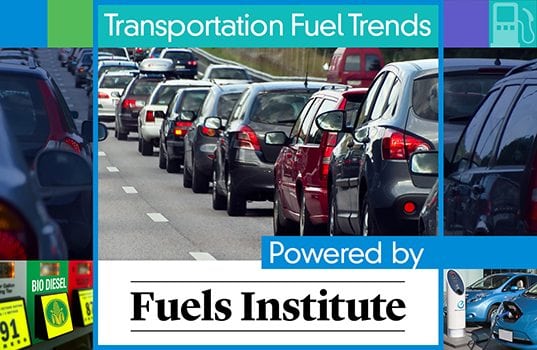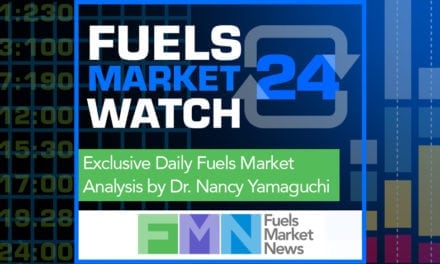By John Eichberger
[Editorial Note: This article ran previously in the May issue of NACS Magazine]
The discussion about gasoline alternatives has been ongoing for years and should continue for years to come. Everyone wants to know which fuel and what vehicle technology will shape the future transportation energy market. Advocates for different options push the environmental and economic qualities of their particular “solution,” but at the end of the day the consumer makes the decision.
In numerous consumer surveys, NACS and the Fuels Institute have repeatedly shown that the primary interest of consumers when considering a vehicle technology and fuel choice is the impact on their budget. Most recently, in a survey of more than 2,000 consumers, the Fuels Institute found that of those who are likely to purchase a vehicle within the next three years, economic considerations ranked overwhelmingly as the most important criteria in their decision. When asked which attributes would be most influential in their purchase decision, 84% said fuel economy and 83% said vehicle cost. Basic safety features trailed a distant third at 52%.
This consumer attitude was echoed in results from a January NACS survey, where consumers said that fuel price was the most important issue when selecting a fuel retail location. Two-thirds said they would drive five minutes out of their way to save as little as five cents per gallon. While consumer behavior in the market does not always match this response, consumers are focused on price and value when replying to survey questions.
Informed Choices
The question about which fuel is likely to win in the battle for tomorrow’s customer can best be answered by evaluating the combined economic value of the vehicle and the fuel.
Vehicle values can easily be compared; listed prices for alternatives and their government-rated average fuel economy can be found on numerous websites. Today, consumers don’t have that many choices in powertrain: gasoline, diesel, flexible fuel, hybrid and to a lesser extent plug-in hybrids and electric vehicles. Natural gas vehicles are not readily available on dealer lots and hydrogen fuel cell vehicles are just now entering the market in California.
As these alternatives become more common and are seen side by side on dealer lots, the ability of consumers to make informed decisions will likely diminish. The relative cost of each fuel type will become more difficult to compare. What is the relative value of an electric charge versus a tank of gasoline, or a kilogram of hydrogen versus a gallon of E85? Unraveling the relative value of certain fuels to the consumer will help them make decisions, and help the industry (actually, both the vehicle and fueling industries) evaluate where to invest resources to satisfy future demand.
The U.S. Department of Energy’s office of Energy Efficiency and Renewable Energy provides additional clarity to the market through its Alternative Fuels Data Center (AFDC) (www.afdc.energy.gov). Through this website, users can learn which alternative vehicles are available, where alternative fuel retailers are located and evaluate the relative value of each type of transportation fuel.
The AFDC has been tracking the retail price of these fuels since 2000 and expresses them in terms of gasoline gallon equivalents (GGE), making value comparisons simple and direct. The site tracks prices for E85, CNG, propane, diesel, B20, B99/B100 and electricity.
Data from the “Price of Fuels in GGE” chart shows some volatility in terms of the relative price of fuels, with propane, E85 and B99/B100 alternating the position as the most expensive fuel. The only true consistency is the relatively low price of compressed natural gas and electricity.
This ability to compare fuels in like terms will become critically important when consumers have the ability to choose among a variety of powertrain options when vehicle shopping. They will be able to calculate the cost of the vehicle plus the anticipated cost in fuel consumption.
The price posted at the local retail station will also strongly influence the consumers’ interest in alternatives. Unless the consumer sees value at the fuel retail location, they are less likely to ask about alternative fuel options when shopping for a car. To help, AFDC also reports the national average price for each fuel.
A number of factors influence a consumer’s decision around which vehicle to purchase and what fuel to use, but the economic consequences of that decision cannot be underestimated. For an alternative vehicle and fuel to be successful in penetrating the market and stealing customers from the gasoline internal combustion engine, consumers will have to be convinced that the decision to convert delivers meaningful economic value in both the short and long terms.
To consumers’ benefit, alternative fuel vehicles are coming down in price every year and becoming more competitive with traditional powertrain vehicles, which will help make the value comparison simpler — but the fuel options remain complicated. One way to simplify it for consumers is to communicate the value of each option in like terms — similar to how AFDC is presenting the data in GGE terms.
As the market begins to incorporate new vehicles and fuels, communication efforts should be coordinated to ensure that consumers understand the value of these new options — only through consumer acceptance can new technologies gain market share.
 For more information about the Fuels Institute or how you can get involved, contact John Eichberger, executive director, at [email protected] or (703)518-7971.
For more information about the Fuels Institute or how you can get involved, contact John Eichberger, executive director, at [email protected] or (703)518-7971.
Join Us!
The Fuels Institute Annual Meeting is November 17-19, in Southern California. You are invited to register for this open meeting and we are planning a fantastic agenda. In addition to discussions on key issues facing the transportation fuels market, we will also be visiting retail facilities that dispense hydrogen and natural gas, as well as visit with experts at Toyota to learn more about advanced vehicle technologies. Registration information will be available in the near future. In the meantime, join the conversation online at Facebook and Twitter. By sharing information and opinions with one another, we can create a sustainable transportation fuels market.











